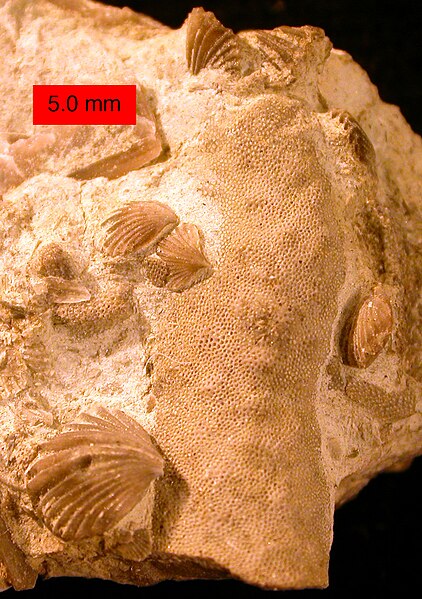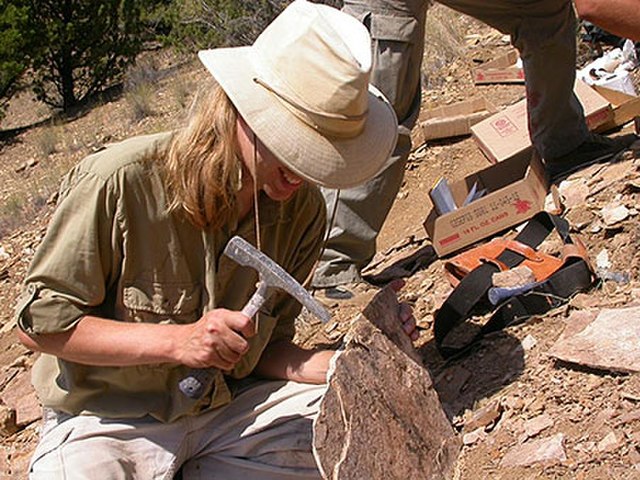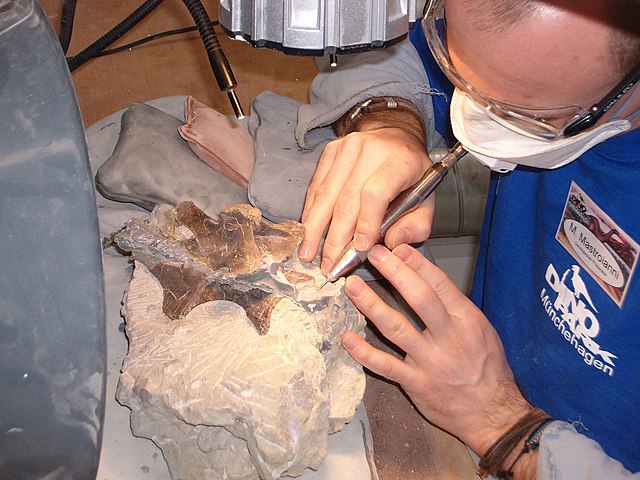Paleoecology is the study of interactions between organisms and/or interactions between organisms and their environments across geologic timescales. As a discipline, paleoecology interacts with, depends on and informs a variety of fields including paleontology, ecology, climatology and biology.
Zygospira modesta, atrypid brachiopods, preserved in their original positions on a trepostome bryozoan; Cincinnatian (Upper Ordovician) of southeastern Indiana
Paleontology, also spelled palaeontology or palæontology, is the scientific study of life that existed prior to, and sometimes including, the start of the Holocene epoch. It includes the study of fossils to classify organisms and study their interactions with each other and their environments. Paleontological observations have been documented as far back as the 5th century BC. The science became established in the 18th century as a result of Georges Cuvier's work on comparative anatomy, and developed rapidly in the 19th century. The term has been used since 1822 formed from Greek παλαιός, ὄν, and λόγος.
A paleontologist at work at John Day Fossil Beds National Monument
The preparation of the fossilised bones of Europasaurus holgeri
Analyses using engineering techniques show that Tyrannosaurus had a devastating bite, but raise doubts about its running ability.
Cambrian trace fossils including Rusophycus, made by a trilobite





